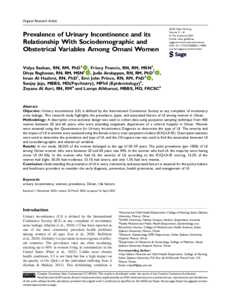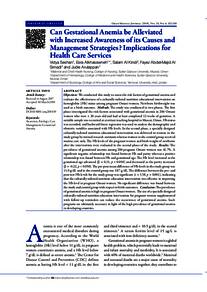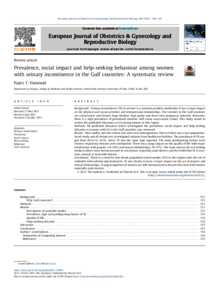Document
Prevalence of urinary incontinence and its relationship with sociodemographic and obstetrical variables among Omani women.
Identifier
DOI: 10.1177/23779608231173803
Source
SAGE Open Nursing. v. 9.
Contributors
Francis, Frincy., Author
Raghavan, Divya., Author
Arulappan, Judie., Author
Al-Hashmiah, Iman., Author
Prince, Emi John., Author
Jaju, Sanjay., Author
Al-Azriah, Zeyana., Author
Alkharusiah, Lamya., Author
Country
United States.
City
California
Publisher
SAGE Publications Inc.
Gregorian
2023-01-01
Language
English
Subject
English abstract
Objective: Urinary incontinence (UI) is defined by the International Continence Society as any complaint of involuntary urine leakage. This research study highlights the prevalence, types, and associated factors of UI among women in Oman. Methodology: A descriptive cross-sectional design was used to collect data using purposive sampling technique from 400 women between 20 and 60 years; who were attending outpatient department of a referral hospital in Oman. Women were assessed using the Questionnaire for Urinary Incontinence Diagnosis to determine the type of UI. The severity and the impact of UI in women were assessed using the female urinary tract symptoms module (ICIQ-UI-SF). Descriptive statistics were used to determine the prevalence and type of UI, and the Chi-square test was used to find the association between UI and sociodemographic and obstetrical variables. Results: In our study, 28.25% of the women belonged to the age of 50–59 years. The point prevalence (per 1000) of UI among Omani women who were between 20 and 60 years was 44%. In the women who had UI, the majority were having stress UI (41.6%). In the women who had UI, the severity of UI, according to the ICIQ-UI-SF scoring, 15.2% of the women had slight, 50.3% had moderate, 33.1% had severe, and only 1.3% had very intense. Conclusion: Understanding the prevalence of UI in every community and associated factors is essential for the policy makers and healthcare providers to consider the early diagnosis, prevention, health promotion, and management of UI.
ISSN
2377-9608
Resource URL
Category
Journal articles



